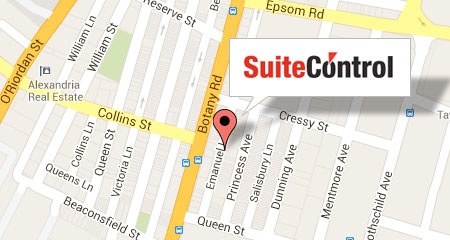What is a DEX? A guide to Decentralized Crypto Exchanges

Leveraging 0x smart contracts and some other tools, hosts can tap into a combined liquidity pool and relay orders between users. A decentralized exchange (DEX) enables users to trade crypto assets through blockchain transactions without the need for a custodian or centralized intermediary. Decentralized crypto exchanges (DEXs) are blockchain-based apps that coordinate large-scale trading of crypto assets between many users. They do that entirely through automated algorithms, instead of the conventional approach of acting as financial intermediary between buyers and sellers.

What Is a DEX? How Decentralized Crypto Exchanges Work
In some decentralized exchanges, everything is done on-chain (we’ll talk about hybridized approaches shortly). Every order (as well as alteration and cancellation) is written to the blockchain. This is arguably the most transparent approach, as you’re not trusting a third party to relay the orders to you, and there’s no way to obfuscate them. https://www.tokenexus.com/ As users are able to sign in in a straightforward manner using their wallet address, the onboarding process for a DEX is seamless and practically instantaneous compared to a centralized exchange. There are several DEX designs, each offering a different benefits and trade-offs in terms of feature-sets, scalability, and decentralization.
- As mentioned above, Automated Market Makers (AMM) DEXs use algorithms to determine the prices of assets.
- This means that a decentralized autonomous organization (DAO) makes it possible for token holders to vote on important protocol decisions like funds allocation and protocol improvement.
- Decentralized exchanges leverage blockchain technology to facilitate peer-to-peer (P2P) trading directly between users.
- This has led a lot of crypto investors to look for alternatives to centralized exchanges.
- As a proof-of-stake network, OSMO tokens are also paid to validators as a reward for securely verifying transactions across the chain’s decentralised network.
- Front running occurs in markets when an insider is aware of a pending transaction and uses that information to place a trade before the transaction is processed.
Advantages and Disadvantages of Decentralized Exchanges

The next decentralized exchange, IDEX, was built on Ethereum and imitated the Counterparty model. The following year, Bancor and Uniswap emerged, and more DEXs have followed since then. However, the blockchain protocol ethos discourages the use of ‘gatekeepers’ or intermediaries whose presence within the conventional financial media has apparent bottlenecks. These include counterparty risks that have been exploited severally, high transaction costs, and slow processing and settlement times. AMMs are algorithmic processes which match trades on a DEX based on its liquidity pool — the collection of tokens available. In essence, they fulfill the role that an order book and in-house accounts otherwise would on a CEX.
Automated Market Makers (AMM)
This is why liquidity is handled by the use of AMMs and liquidity pools. A liquidity pool is a smart contract where users can lend their crypto assets out to exchanges or other DeFi applications. Navigating the world of decentralized exchanges might seem daunting at first, but with the right guidance, it becomes straightforward.
- DEXs can be more secure than traditional exchanges since user funds are not held in a central location.
- Using a DEX requires only a wallet and some crypto to trade and pay gas fees.
- Next, connect it to your cryptocurrency wallet, which has some tokens in it to swap.
- Also remember that as the popularity of DeFi as a whole grows, so too will the use of DEXs, and their features and functions.
- To the extent any recommendations or statements of opinion or fact made in a story may constitute financial advice, they constitute general information and not personal financial advice in any form.
- Visit Bennett’s personal website to learn more about him and read more of his writing.
As such, any recommendations or statements do not take into account the financial circumstances, investment objectives, tax implications, or any specific requirements of readers. When covering investment and personal finance stories, we aim to inform our readers rather than recommend specific financial product or asset classes. Decentralised exchanges have a few key features that allow them to work seamlessly. If you opt to use the direct swap method, click [Swap] on the top navigation, then choose which assets you want to swap.
While decentralized exchanges bring numerous advantages to the table, they also come with their own set of challenges. From potential technical barriers to limitations in high-frequency trading capabilities, it’s essential to understand these disadvantages before diving headfirst into DEX trading. In this section, we aim to present a balanced view, highlighting areas where DEXs might not yet match up to their centralized counterparts. There are two main types of exchanges, centralized exchanges and decentralized exchanges. There are over 200 DEXs in 2022, with Uniswap (v3) holding the largest market share by volume. The 24-hour DEX trading volume, at the time of writing this article, was more than $3 billion.
What are examples of DEX in crypto?

DEXes enable decentralized anonymous crypto trading via the use of smart contracts — pieces of code which decide if and when an agreement between two parties may be executed. Smart contracts fulfill the role of a backend on traditional exchanges — they only allow a trade to execute if the conditions of the agreement behind that trade are met. Decentralized exchanges (DEXes) are a relatively new form of cryptocurrency exchange which allow traders to swap cryptoassets without any third party handling the transaction. Ethereum is the most popular blockchain for tokens due to its unique programmable smart contracts. As a result of this popularity, the Ethereum-based DEX, Uniswap, has become favored by token traders.
For a first-time user, understanding how to navigate and use a DEX can be challenging. Gas fees, liquidity pools, wallets, and slippage are all possible What is DEX hurdles to overcome. It takes time to grasp how a DEX works confidently, and to invest responsibly, you should always understand your tools.








